Santo Domingo, Dominican Republic – Last Wednesday, a team lead by the US State Department and the US Armed Forces, along with help from Dominican forces and the US Department of Homeland Security, quickly set up a receiving station for US citizen evacuees at San Isidro, a Dominican air base just outside of Santo Domingo. The facility is fully outfitted with the technology, space and equipment to support a complex, fast-moving aid operation to Haiti, but now sits empty, often fully staffed, nearly all of the time.
“In the beginning,” a US Embassy employee in Santo Domingo said, “it was really gratifying, to see the children coming off the planes.” Now, employees desperately wish the base was being better utilized, and their mission could adapt to support aid to Haiti.
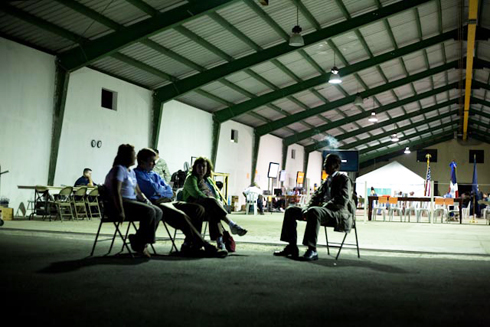 Employees and potential passengers wait for planes that fail to arrive at San Isidro Air Base, 25 miles outside Santo Domingo. Photo/Emily Troutman
Employees and potential passengers wait for planes that fail to arrive at San Isidro Air Base, 25 miles outside Santo Domingo. Photo/Emily Troutman
US State Department officials here estimate that at least 22,000 Americans are still in Haiti, either unaccounted for or missing. But since Wednesday, this center has only processed about 600 evacuees, and 50 since Sunday. The number 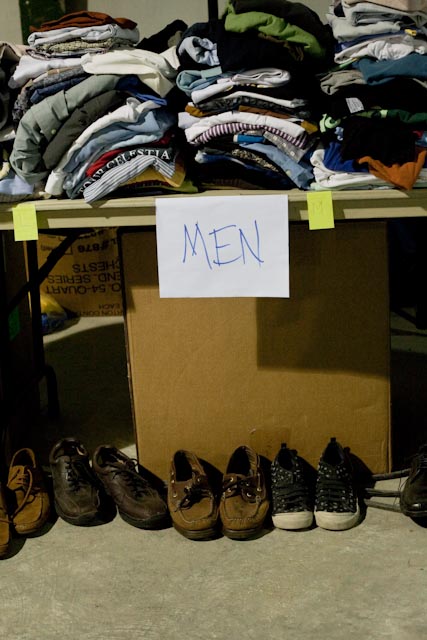 of Americans landing here has continued to drop, and flights are now being regularly rerouted to Miami. A few helicopters are also transporting evacuees.
of Americans landing here has continued to drop, and flights are now being regularly rerouted to Miami. A few helicopters are also transporting evacuees.
“Las Americas airport [in Santo Domingo] is a mess, and so is Port-au-Prince. Aid flights can’t get in and out. Here, we’ve got an empty runway, a hangar and clear road access to the border. Why don’t they land flights here, pack up trucks, and ship everything in convoys to Port-au-Prince? This could be their center of operations,” said one embassy employee.
A representative of the US Border Patrol recalled that when they first came to the hangar to set up their operations, there was no electrical wiring and a seized airplane was sitting in one corner, left over from a Dominican drug bust. The entire creation of the evacuation center happened in one day. Air Force personnel say that the US Embassy was able to set up this operation quickly, in part, because it’s something they do all the time.
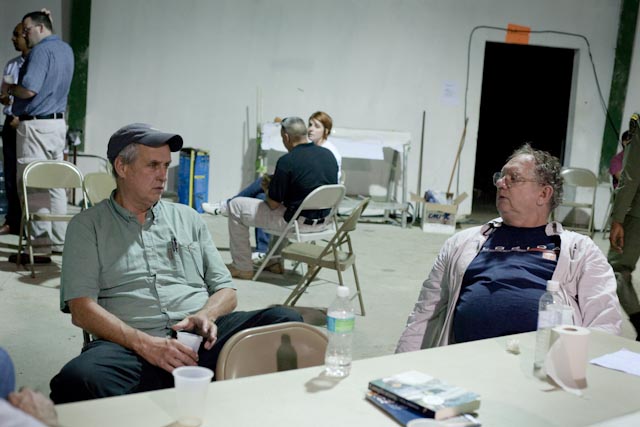 Two doctors from the University of Florida wait with their team, hoping to get into Port-au-Prince. Phtoto/Emily Troutman
Two doctors from the University of Florida wait with their team, hoping to get into Port-au-Prince. Phtoto/Emily Troutman
In the hangar, 200 chairs face two flat-screen televisions, and a console of computers with Internet access are available for people to contact their families. As people are received, they are provided with clothes and food and taken by bus to area hotels. Much of the preparation for this project was done by the spouses of 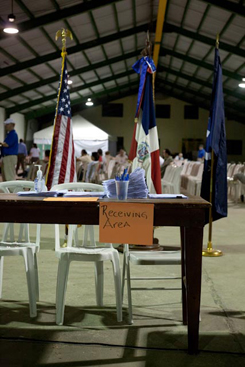 US Embassy employees, who volunteer their time.
US Embassy employees, who volunteer their time.
On their way back to Haiti, the planes take humanitarians and aid. But the delivery of aid is not at all the priority of this mission. Each C-130 plane flying into San Isidro fits approximately 60 passengers, and ten have landed since last Wednesday. Humanitarians and aid that go on the return flight to Haiti often do not fill the planes to capacity.
A doctor, traveling with a team from the University of Florida, confessed he got on the return flight to Port-au-Prince because a friend’s son-in-law is a higher-up in the US Air Force. International Medical Corps found out about the flight through contacts in the United States, and were eager to start using the regular 3 AM return flights to ship 38 pallets of medicine over the next four days. There is almost no way to know this flight exists except through inner channels. As a result, most of the aid and aid workers taking this route have been shuttled through by advisers to the project in Washington, DC.
 Early Tuesday morning, these four pallets of medicine were unable to reach Haiti for distribution. The IMC will have to find a new route to Port-au-Prince for all of their 38 pallets of pharmaceuticals. Photo/Emily Troutman
Early Tuesday morning, these four pallets of medicine were unable to reach Haiti for distribution. The IMC will have to find a new route to Port-au-Prince for all of their 38 pallets of pharmaceuticals. Photo/Emily Troutman
At 4 AM on Tuesday morning, the flight scheduled to land at 2:30 AM had yet to arrive. A mixed group of about 20 Armed Forces, Homeland Security, 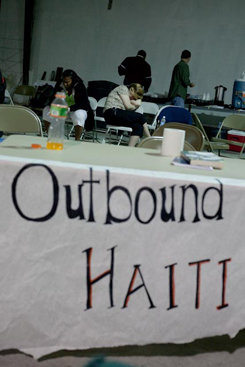 US Embassy and Dominican staff members surfed the web, smoked cigarettes and watched television while they waited for about 50 American evacuees to arrive.
US Embassy and Dominican staff members surfed the web, smoked cigarettes and watched television while they waited for about 50 American evacuees to arrive.
By 6 AM, the military finally informed the leadership at San Isidro that the plane had been diverted to Miami. The reason was unclear, but everyone seemed to know it was coming. “The same thing happened yesterday,” one worker said.
Humanitarians planning to head into Port-au-Prince on the return journey were left to make their own arrangements. Some aid workers were put on waiting lists for helicopter lifts the next day. For International Medical Corps, their shipment of four pallets of medicine was sent back to a nearby warehouse.
Join us in defending the truth before it’s too late
The future of independent journalism is uncertain, and the consequences of losing it are too grave to ignore. To ensure Truthout remains safe, strong, and free, we need to raise $17,000 by midnight tonight. Every dollar raised goes directly toward the costs of producing news you can trust.
Please give what you can — because by supporting us with a tax-deductible donation, you’re not just preserving a source of news, you’re helping to safeguard what’s left of our democracy.
